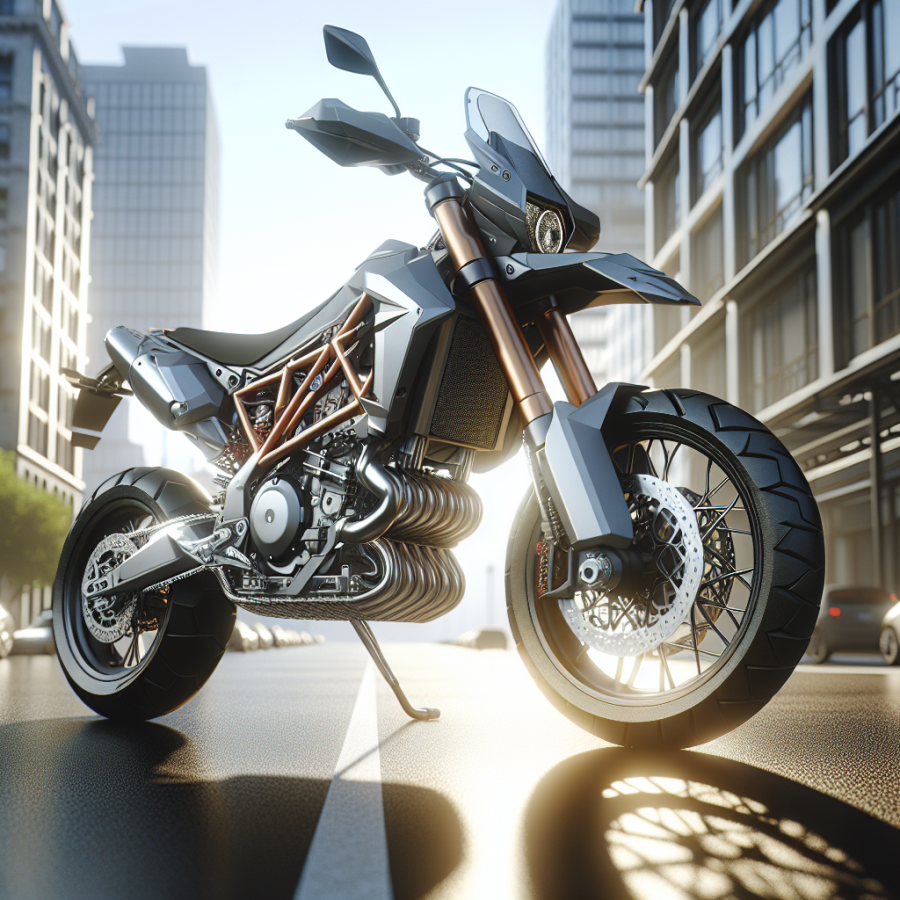Blending Disciplines: The Hybrid Appeal of Supermoto Racing
Supermoto racing exemplifies a thrilling blend of disciplines, merging the high-flying action of motocross with the precision and speed of road racing. The distinctiveness of Supermoto lies in its multifaceted nature, where riders must exhibit prowess on diverse terrains, transitioning from the ruggedness of dirt tracks to the smoothness of asphalt with seamless agility. This unique hybridization not only challenges riders but also captivates spectators, amplifying the appeal of the sport.
Initiated in the late 1970s, Supermoto was born from an imaginative concept – to find the ultimate motorbike racer who could conquer multiple forms of racing. This vision metamorphosed into a sport that requires competitors to adapt to varying surfaces within the same race. A typical Supermoto track is a tapestry interwoven with sections of tarmac and dirt, including jumps and tight hairpin turns that test the versatility of both the bike and the rider.
The motorcycles used in Supermoto are a blend unto themselves, pulling characteristics from motocross and road racing bikes. They are primarily off-road motorcycles, such as those seen in motocross but are fitted with road-racing tires and modified suspension to cope with both the demands of asphalt and the rigors of dirt tracks. This duality is at the heart of Supermoto’s design philosophy, creating a machine that can perform dazzlingly in a broad spectrum of racing conditions.
Riders who excel in Supermoto thus tend to be well-rounded, possessing the ability to control their bikes on loose dirt as well as they can during high-speed cornering on pavement. They combine the aggressive cornering techniques of road racers with the loose, sliding turns of dirt track riders. This ability to switch styles from one corner to the next makes Supermoto racing not only a test of skill but also a riveting display of adaptability and finesse.
Supermoto’s eclectic nature provides an avenue for racers from various backgrounds to converge. Motocross specialists, flat-track veterans, and road circuit pros often find common ground on the Supermoto track. This pooling of different racing philosophies enhances the competitive landscape, enriching the sport with a variety of techniques and strategies.
Moreover, the inclusive nature of Supermoto racing extends to its accessibility. Relatively lower costs compared to other motorbike racing divisions make it an attractive entry point for aspiring competitors.
Read also:
Unveiling the Magic of the 5x5x5 Cube: Strategy and Secrets
Navigating the Transition: Mastering Supermoto's Unique Challenges on Varied Terrain
Supermoto racing, with its exhilarating blend of high-speed asphalt sections and challenging dirt tracks, presents a distinctive set of obstacles for even the most seasoned riders. Making the transition between these varied terrains requires not only technical skill but also a nuanced understanding of the dynamics of your bike and the shifting demands of the surface beneath your wheels.
As you navigate from the relative stability of asphalt to the unpredictable nature of dirt tracks, the first thing you'll notice is the change in traction. Asphalt provides a consistent grip that allows for confident cornering and braking. On dirt, however, the loose surface can cause your tires to slide unpredictably. Mastering this transition involves an acute sense of balance and throttle control. Riders must learn to modulate their speed and apply just enough power to maintain forward momentum without spinning the rear wheel excessively.
Furthermore, the bike setup for supermoto must be carefully considered. Suspension settings that work well on asphalt may be too rigid for dirt, leading to a lack of control and comfort. Conversely, a setup that's too soft can hamper your bike's responsiveness on smooth tarmac. Finding the right compromise is often a matter of trial and error, with frequent adjustments based on the specific conditions of the track. This is where the input of an experienced mechanic or fellow racer can be invaluable.
Body positioning is another crucial aspect of making smooth transitions between terrains in supermoto racing. On asphalt, riders typically hang off the bike, leaning into corners to maximize grip. However, on dirt sections, the approach changes significantly. Riders need to adopt a more upright stance, shifting their weight backwards to enhance rear wheel traction. As the surface changes, riders must be able to quickly adapt their body position to maintain control.
The choice of tires is a balancing act as well, with supermoto requiring a hybrid solution that can cope with both terrains. Riders often opt for tires with a pattern that offers good grip on asphalt while still providing enough surface area to handle the looser soil of dirt sections. It's also essential to monitor tire pressure closely, as it can vastly affect handling and grip on different terrains.
Lastly, mastering the mental game is just as important as physical preparation. The abrupt switches in racing surface can be mentally jarring, demanding high levels of concentration and confidence. Successful supermoto racers possess the mental fortitude to stay calm and maintain focus during these transitions, ensuring they can react quickly and effectively to the challenges thrown their way.




